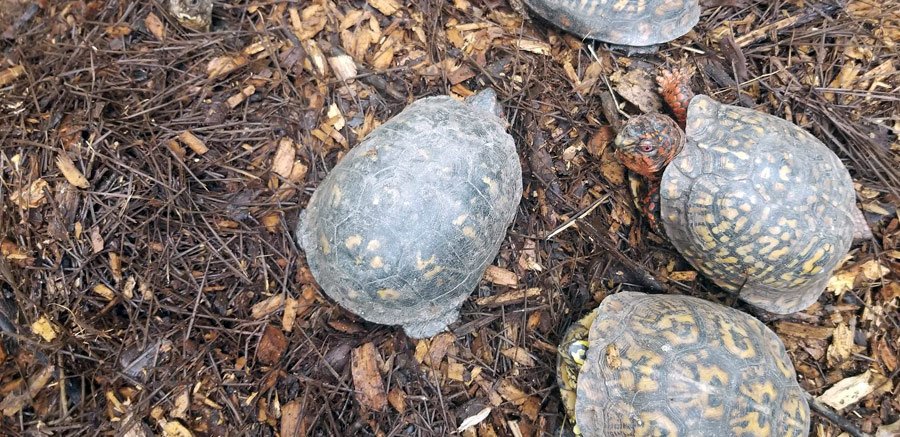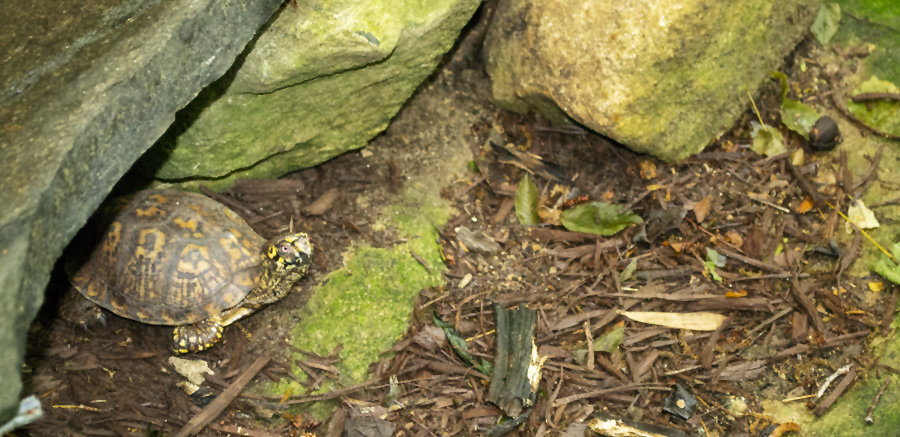
EASTERN BOX TURTLE
At about 4 years of age, an Eastern Box Turtle develops a hinged plastron (underside of the shell) which it can fold allowing it to almost be completely closed.
PROFILE
This collection of Eastern box Turtles was a surprise as they were in hibernation when we acquired the property. It was not until the first early sign of spring and clean up that we discovered each turtle one by one.
OVERVIEW
CONSERVATION STATUS
Least Concern
AVERAGE SIZE
Compared to a 6′ Man
AVERAGE WEIGHT
2 lbs
AVERAGE LIFESPAN
100 Years
DIET
Omnivore
REGIONS
North America
Found primarily in the eastern United States, from eastern Kansas, Oklahoma, and Texas to the Atlantic Ocean. They are found all the way from southern Florida in the south to southern Maine and the southern and eastern parts of the Michigan Upper Peninsula in the north. They are present in the Great Lakes region, but they are rare there and typically limited to areas far away from busy roads. In warmer climates they can be found in higher elevations whereas in colder climates they are limited to below 1,000 feet above sea level.
APPEARANCE
Eastern box turtles have a domed-like shell or carapace that is mostly brown or black with yellow and orange radiating patterns. Females have a flat plastron, which is the underside of their shell. Males have a concave plastron. They are able to pull into their shells and fully close their plastron creating a “box.” If damaged, their shells will grow new tissue, and damaged “scutes” fall off. Their skin is similar in color with the addition of yellow and red, white, or orange streaks and spots. Males have red eyes while the females’ eyes are brown. Eastern box turtles have five toes on front legs and four on their hind legs.


CHARACTERISTICS
Younger turtles will eat almost anything and can be found hunting near ponds and streams. Older turtles feed mainly on land on items like berries, insects, roots, flowers, eggs, and amphibians. Box turtles hibernate over winter, burrowing themselves in stream bottoms, leaf piles, tree hollows, or mammal burrows. They have been observed to hibernate in the same location year after year.
Their ability to draw themselves into their shells is surpassed by the ability to close the shell. The underside, or plastron, has a hinge that allows it to fold, creating an impenetrable “box” and providing a high level of safety – very few predators can get past this and thus leave them alone.
Unlike many animals, eastern box female turtles are not ready to mate for nearly a decade. Upon reaching reproductive maturity, they wait until they cross paths with a male. Once eggs are fertilized, a female lays 3 to 8 per clutch. The female actually stores the male’s sperm and can continue laying eggs from the initial mating for as long as four years.


